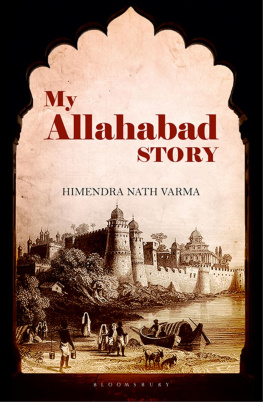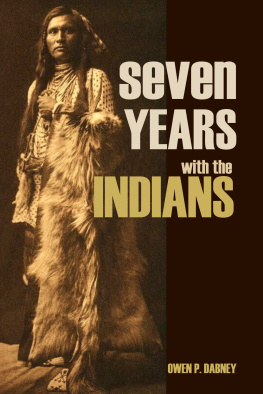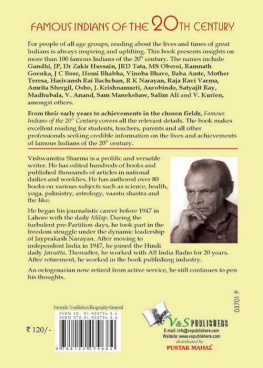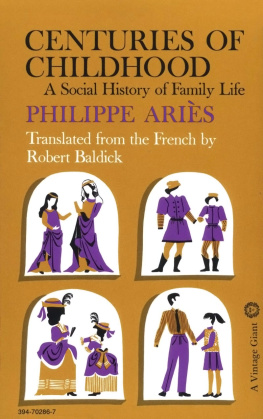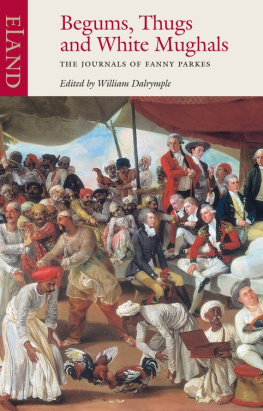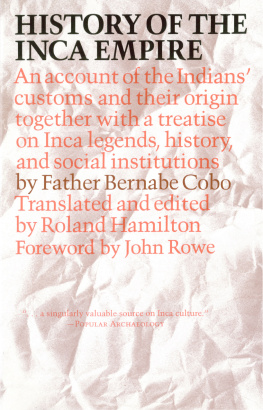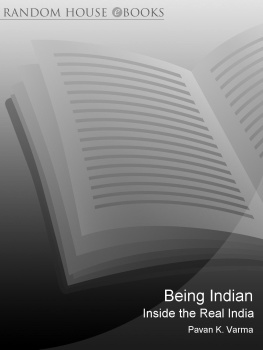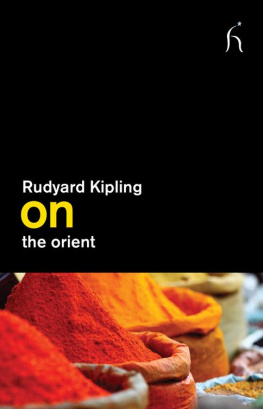Table of Contents

My Allahabad Story
My Allahabad Story
HIMENDRA NATH VARMA

BLOOMSBURY INDIA
Bloomsbury Publishing India Pvt. Ltd
Second Floor, LSC Building No. 4, DDA Complex, Pocket C 6 & 7,
Vasant Kunj, New Delhi 110070
BLOOMSBURY, BLOOMSBURY INDIA and the Diana logo are trademarks of Bloomsbury Publishing Plc
First published 2018
Copyright Himendra Nath Varma, 2018
All rights reserved. No part of this publication may be reproduced or transmitted in any form or by any means, electronic or mechanical, including photocopying, recording, or any information storage or retrieval system, without prior permission in writing from the publishers
Bloomsbury Publishing Plc does not have any control over, or responsibility for, any third-party websites referred to or in this book. All internet addresses given in this book were correct at the time of going to press. The author and publisher regret any inconvenience caused if addresses have changed or sites have ceased to exist, but can accept no responsibility for any such changes
E-ISBN: 978-93-88038-02-7
2 4 6 8 10 9 7 5 3 1
To find out more about our authors and books visit www.bloomsbury.com and sign up for our newsletters
This book is dedicated to my late brother Ravindra Nath Varma of the erstwhile The Leader and later The Hindustan Times whose wide reading and extensive writings always inspired me.
Contents
W hen I started randomly penning some of my childhood memories, which has eventually taken the shape of My Allahabad Story, I had little idea that it was the beginning of a book. On a trip to Allahabad, my brother Satyendra, who read the few pages I had written by then, goaded me to write more and more. As I continued, it was he who I constantly bothered for verifying many of the factual references, and I am extremely grateful to him. My wife Mamta, who was made to read out every page, and my children Sujata, Mandira and Nitin were constant sources of encouragement, all the time expressing admiration at my memory. Very often, the soft and furry footrest in the form of Rufus, Mandiras black Labrador, provided much needed comfort while I typed. I must accept that it was my good friend Sucheta Misra Swain, a literary enthusiast, who was the first to seriously suggest, on reading some of the early portions of the script, that the material was perfectly suitable for a book. A K Srikumar, my former colleague at the State Bank of India and an established author himself, constantly pushed me to go ahead. I will forever be grateful to him. I can never forget my very helpful neighbour Anita Kumar, who always came to my rescue whenever I needed technical help since I am not at all computer-savvy. Finally, I must express my grateful thanks to Suhail Mathur of The Book Bakers whose valuable guidance helped me transform the raw script into the shape of a book.
M y Allahabad Story was never intended to be a book. A few years ago, on a late wintry evening at my New Delhi home, I was gripped by a sudden pang of nostalgia, and upon switching on my laptop, I randomly started writing about the days when my father was alive, and the wonderful childhood I had lived through in Allahabad. Thus, the chapter in this book that appears as Evenings at Home, was the first to be written, for they were special and unusually interesting. It remained at this juncture for some time, till I happened to visit Allahabad on one of the periodical trips that I take in order to recharge my batteries, and showed this piece to my brother Satyendra. He was not only thrilled, as he read about all those moments that sent him cascading back to the past, but also quite surprised at some of the details that I remembered even after nearly sixty years. He was the one to suggest that I write more. I had quite enjoyed writing that piece, and thought why not go as far back in life as I can remember. Memories can be such powerful, precious possessions, and should be preserved for posterity. After all, histories are moulded from them. And thats what I have done in these memoirs. Family members are astonished by how well I remember people, incidents from that time, and the life that was. That life is well over half a century old, spent in good old Allahabad, and the members of my family vouch for every bit of it as true, authentic, and accurate. As I said, it was never meant to be a book and what I wrote was for my familys eyes only. However, as I went along, I kept wondering whether my accounts could be adapted to provide, even to a lay reader, especially if he had ever lived in Allahabad, with a slice of the life that prevailed in a typical middle class joint-family household of the Kayasthas of Uttar Pradesh, half a century ago. I am convinced much of it, especially the customs and traditions from that time, will read like artifacts in a museum from a distant past and capable of fascinating the present generation by offering a glimpse of how their grandmothers lived.
Therefore, I continued chronicling, giving the text some kind of order, lest nothing of note, or interest, or some relevance to contemporary times, from my point of view, was omitted. While this effort is not meant to be a historical record, it is definitely an attempt towards articulating what life was like in the charming city of Allahabad of yore, where I spent my early years, and the profound transformation that it has undergone. I have tried, to the best of my abilities, to trace those changes in the chapter, What Happened to My Allahabad, especially its lost charm. I have had a privileged childhood and upbringing, deeply influenced by my mother, father and eleven older siblings, and through them, the people who came home regularly. Even at a very young age, I could perceive that what I was experiencing something different. My father, who had started his practice as a young lawyer in Allahabad in the year 1919, like many of his peers in the same profession, was also drawn into public life. But he had a distinct edge over others, thanks to his father-in-law, Major Dr Ranjit Singh, OBE, whose very close associates were men of the stature of Motilal Nehru, Madan Mohan Malviya, Dr Sachidanand Sinha, Sir Sundar Lal, Sir Tej Bahadur Sapru, Sir C Y Chintamani, and Krishna Ram Mehta, to name some, apart from Governors of the State (Allahabad was the capital of Uttar Pradesh at that time), High Court Judges, and a host of senior civil and military officers. However, the most significant turn took place when father came to occupy 7, Elgin Road, initially as a tenant of Dr Sachidanand Sinha, an eminent lawyer and statesman with a strong connection with Bihar, who divided his time between Allahabad and Patna. Therefore, a chapter has been devoted to 7, Elgin Road. As the eleven of us were growing up, fathers sessions with us at the dining table, and in the drawing room, where we were sometimes allowed to join his friends, became a rare and invaluable source of intellectual stimuli, to acquire knowledge of the world. A great storyteller, father also had a sense of humour, and some of the characters and incidents featured in this book owe their presence to his accounts of them. That was the privileged upbringing I was referring to. Inspiration for my memoir also came from the title of Mr Fali Narimans brilliant autobiography Before Memory Fades, and I have rushed through some parts of my writing before that happened to me too. A rather detailed account of one Mrs Thompson, a close acquaintance of my maternal grandfather, is featured here for two reasons: First, because I discovered the account of her romantic interludes buried among my maternal grandfathers diaries that he had meticulously maintained from 1901 to 1935, which I found to be hilarious; and second, the whole affair brings out so much about the character of the social life that had prevailed in Allahabad a hundred years ago, a beautiful mlange of people, English, Anglo-Indians and Indians.

